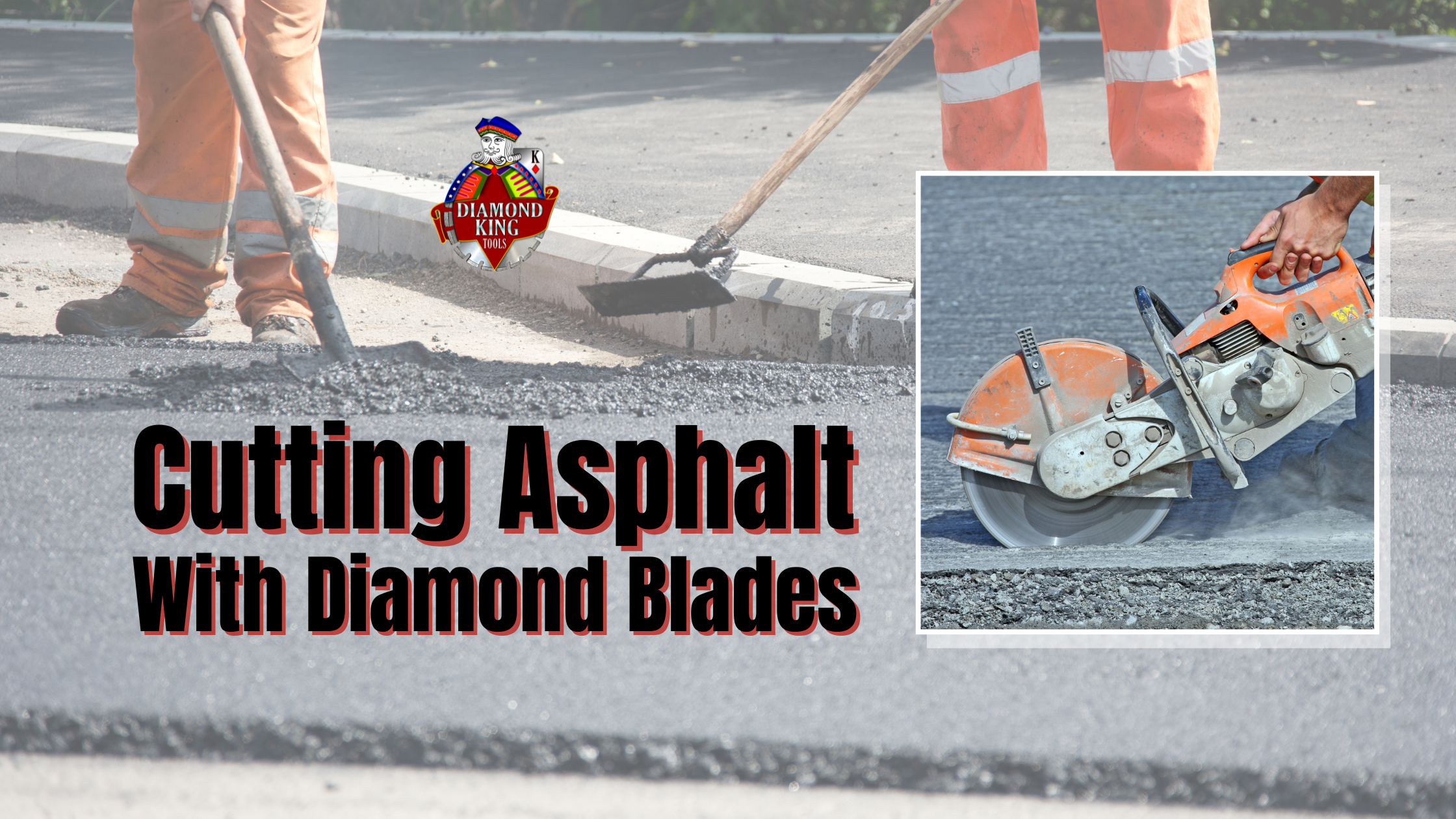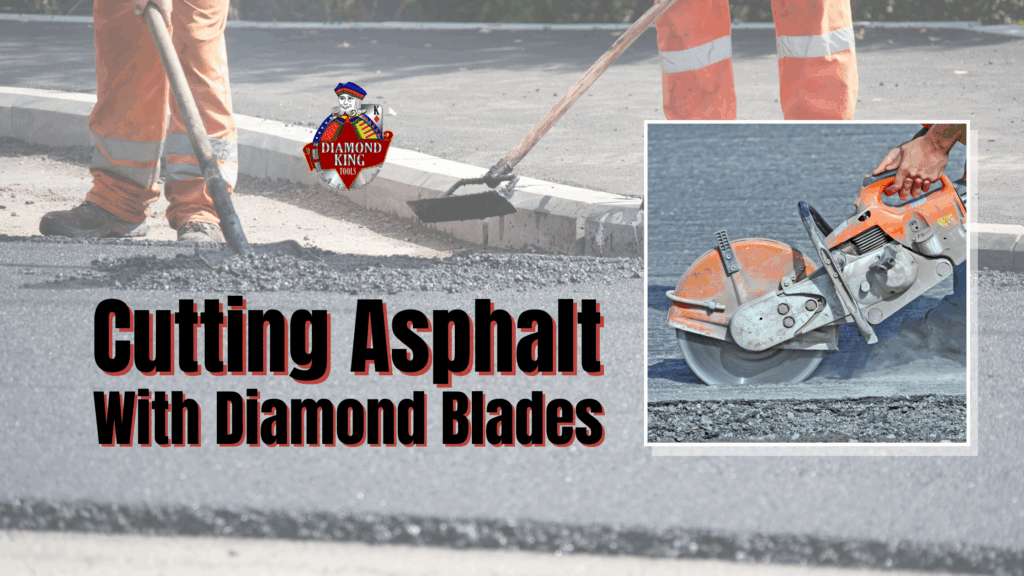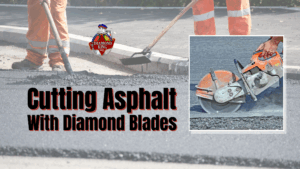Asphalt is one of the most common materials in road construction, parking lots, and driveways, but cutting it requires precision, the right equipment, and the right technique. If you’re in construction, landscaping, or hardscaping, chances are you’ll need to cut asphalt at some point, whether for patching, installing utilities, or replacing damaged sections. That’s where cutting asphalt with diamond blades comes in.
In this guide, we’ll cover how to choose the right diamond blade for asphalt and how to properly cut to ensure efficiency, safety, and long-lasting results.
Why Diamond Blades for Asphalt?
Unlike steel or abrasive blades, diamond blades are designed for durability and precision. The diamond segments on the blade grind through the asphalt instead of tearing at it, allowing for cleaner cuts, faster performance, and less blade wear.
Because asphalt is softer and more abrasive than concrete, the wrong blade can wear down quickly or fail to cut effectively. That’s why using an asphalt diamond blade engineered specifically for the material is crucial.
How to Pick the Right Diamond Blade for Asphalt
Not all blades are created equal, and picking the wrong one can cost time and money. Here’s what to look for:
- Blade Bond Hardness: Asphalt is soft but abrasive, so you’ll need a diamond blade with a harder bond to withstand the constant grinding.
- Segment Design: Segmented diamond blades with wide, deep gullets are ideal, as they help remove debris and reduce heat buildup during the cut.
- Blade Size: For small jobs or handheld saws, 12-14″ blades work well. For larger projects with walk-behind saws, 18-24″ blades provide deeper, faster cuts.
- Wet vs. Dry Cutting: Whenever possible, use wet cutting for asphalt. Water helps cool the blade, extend life, and reduce dust.
At Diamond King Tools, our Asphalt Diamond Blades are engineered specifically for asphalt cutting, with long-lasting durability and maximum efficiency.
Step-by-Step: How to Cut Asphalt Properly
- Mark Your Cut Line – Use chalk or a marking tool to outline where the cut will go. Precision here saves time later.
- Choose the Right Saw – A walk-behind saw is best for large asphalt jobs, while a handheld saw can handle smaller sections.
- Check Blade Installation – Make sure your diamond blade is securely mounted and spinning in the correct direction.
- Start with a Shallow Pass – Begin with a light first pass, about 1-2 inches deep, to guide your cut and reduce strain on the blade.
- Make Successive Passes – Continue cutting deeper with each pass until you’ve reached the full depth required. This is more effective than forcing the blade through in one pass.
- Use Water When Possible – Keep water flowing onto the blade to extend its lifespan and reduce dust hazards.
- Finish Cleanly – Once the cut is complete, lift the blade out carefully to avoid damaging the edge.
Safety Tips
- Always wear proper PPE, including eye protection, gloves, ear protection, and a respirator if cutting dry.
- Ensure your saw is well-maintained and that guards are in place.
- Work slowly and steadily: forcing the cut only increases blade wear and risks kickback.
Final Thoughts
Cutting asphalt with diamond blades is all about preparation, the right blade choice, and proper cutting technique. Using a quality asphalt blade designed for abrasive surfaces ensures a clean cut, saves time, and extends blade life. Whether you’re patching a road, installing utilities, or handling a driveway project, following these steps will give you professional results every time.
Looking for the right blade? Check out our Black Magic Asphalt Blade and other premium diamond blades built to handle the toughest jobs.




